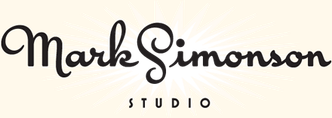Type selection is key
Typography sets the tone before you say a word. It shapes how your message comes across — how it feels, how it’s read, and how it’s remembered.
We notice type most when it’s wrong. When something feels off. The spacing’s tight, the voice is too loud, or it just doesn’t match what’s being said. But when the type is right, it gets out of the way — and helps the words do their job. It can give structure to ideas. It makes space for meaning. Typography isn’t just about style. It’s about the way we take in information. It adds rhythm to the reading experience. It tells us where to look first and what matters most. It makes content easier to follow, and in some cases, easier to trust. The tone comes through in the details — the shape of the letters, how they’re spaced, the way one form leads to the next. Some typefaces feel quiet and careful. Others have energy. Some pull you in. Some stay out of the way. Choosing the right one is less about picking a look and more about finding a voice that fits what you want to say.That’s why trying type in context matters. It’s one thing to see a beautiful letter or a well-set specimen — but it’s another thing to see how it handles your content. How it behaves when it’s small. How it reads when it’s big. How it feels with your own words.That’s what this space is for. Try a headline. Paste a paragraph. Adjust the size, change the weight, type something unexpected. Some typefaces are built to be expressive. Others are made to stay flexible. The best ones hold up in all kinds of situations. They do the job without losing their character. Take a minute to experiment. You’ll know when it feels right.
About Blakely Light
Blakely Light is a part of the Blakely font family. Blakely Light is ideal for branding, logo, and magazine usage.
Blakely (2000, 2003) was originally developed as a custom font based on a logo I designed in the early ’90s for the Signals mail order gift catalog. It’s a condensed, sans serif Art Deco design, similar in some ways to Kabel Condensed and Newport, both from around 1930. It’s a caps-only design, and the spacing is optimized for all-caps settings, nearly letter-spaced in the Light weight. I added the Bold and Black weights in 2003, which were in the back of my mind from the beginning.
Language Support
Language Support
- Catalan
- Croatian
- Czech
- Danish
- Dutch
- English
- Filipino
- Finnish
- French
- Fula
- German
- Hungarian
- Indonesian
- Italian
- Latvian
- Malay
- Maltese
- Norwegian
- Polish
- Portuguese
- Romanian
- Slovak
- Slovenian
- Spanish
- Swedish
- Turkish
Features
OpenType Features
- Common Ligatures
Blakely Character Set
latin capital letter a U+0041
A
